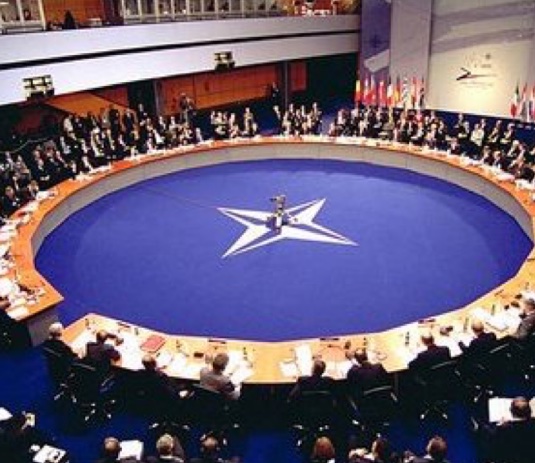by Carmine Stabile –
The transatlantic landscape had remained anchored to March 27, 2020, when for the last time NATO opened its doors to the thirtieth member of the Alliance: North Macedonia. To date, the intergovernmental table is expanding by welcoming Finland, which since 4 April 2023 has become the thirty-first member and second Scandinavian country of the Alliance, thanks also to the turning point sanctioned by the victory in the general elections by the conservative bloc, the which pushed the entrance.
NATO, or better known as the North Atlantic Treaty Organization and (North Atlantic Treaty Organization) in its unpublished name, was born on April 4, 1949 in Washington in the USA, when following the signing of a Treaty by twelve States including Belgium, Canada, Denmark, France, Iceland, Italy, Luxembourg, Norway, the Netherlands, Portugal, the United Kingdom and the USA, it was decided to lay the foundations for creating an intergovernmental organization which had the possible conflict” of the USSR, in the event of an invasion against Western Europe.
The entry of Finland, like the entries of the other Atlantic components previously, were guaranteed by virtue of article 10 of the Washington Treaty, on the basis of which the member states, only after a unanimous preliminary agreement, can invite within the Alliance every European state that is able to: assist security and promote the increase of the principles enshrined in the Treaty.
From a geographical point of view, the entry of Helsinki has created instability since Finland shares a border more than a thousand kilometers long with Russia, and this has aroused many reactions from Russia, which immediately recriminated Atlantic Pact non-compliance with the decisions established in 1990, when in February of the same year, a meeting was held between the US secretary of state James Baker and the leader of the USSR Mikhail Gorbachev, in which everything was resolved by establishing the non-expansion of the NATO jurisdiction in the east, reciprocating the Soviet agreement of the reunification of Germany.
All this is located along the axis of the years that retrace the Cold War, when the “Iron Curtain” fell over Europe, a metaphor that was used for the first time by Winston Churchill, in order to idealize the mammoth separation between the western and eastern blocs, i.e. the sort of bipolarity that has arisen between the USA and the USSR leading the fault line between the capitalist world and the eastern one to the pinnacle of evidence.
In part, the healing of the fracture occurred following the fall of the Berlin Wall in 1989, which represented for Europe and for the rest of the world the dissolution of one of the most controlled borders which until then were in global relief; legitimizing liberal democracy as a victorious system of government, capable of putting an end to a rival ideology, paving the way for evolution towards a universal and homogeneous state.
The history of NATO has been marked by the fall of the wall, an historic event which shaped it into a form of partnership with a collaborative character, using it as political-military equipment. Alliance that from a political point of view must commit itself to the maintenance and safeguarding of democratic values, allowing the member states to confront each other in matters of defense in the long term, remaining united on a single position, trying to avoid possible conflicts; while from a military point of view, the guarantee of the commitment of the peaceful resolution of potential disputes.
Certainly the decision by the Finnish government to interrupt the neutral line, thus hoping for an Atlantic approach, was dictated by Russia’s unusual move to invade Ukraine. This war event rang as an alarm bell following the various threats advanced by Moscow against its territorial neighbors.
The mystery that remains unresolved embraces Finland’s entry into NATO and how much this affair could affect a possible reopening of the fault line, which would risk bringing to light the geopolitical collapse designed in the past, risking dragging the NATO front on a collision course with the Russophone front. Even if the Atlantic system would try in every way to avoid collisions of a warlike nature which would plunge the northern hemisphere back into the abyss.
